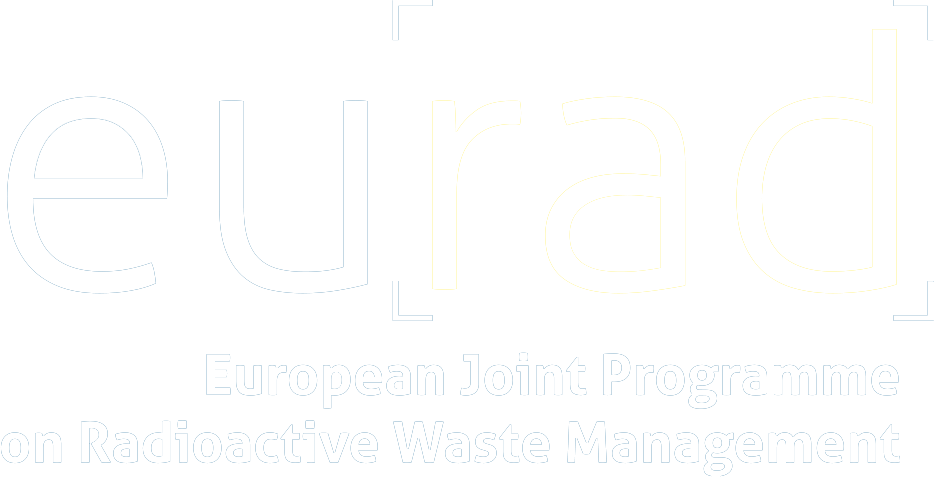Alkali-activated materials (AAMs) have been intensively studied in recent years and are considered as one of the potential low CO2 alternatives to ordinary Portland cement towards sustainable construction materials by a conversion of several wastes into useful products. Geopolymers is considered as a sub-group of AAMs with a low calcium system in which alkali aluminosilicate (N-A-S-H) gels with pseudo-zeolitic structure are the main products. Geopolymers consist of an amorphous network of aluminate and silicate tetrahedra sharing bridging oxygen atoms, which make them potential candidates for waste immobilization. Due to its mainly amorphous structure (Provis, 2018), high alkalinity and the absence of portlandite, a well-designed geopolymer offers a good immobilization of heavy metals and a good binding capacity. In 2013, geopolymer is considered as one of four types of alternative cementitious materials for nuclear application by the International Atomic Energy Agency (IAEA) (Drace et al., 2009). Since then, numerous studies have been implemented regarding the possibility of using geopolymers to stabilize and solidify radioactive waste. However, there is still limited knowledge and understanding of the durability and behaviour of geopolymer under exposed conditions typical for a radioactive waste stream. Therefore, further research on these issues is a prerequisite before application of geopolymers to waste immobilization is possible.
There are few studies on the effect of irradiation on thermo-physical properties (e.g. (Craeye, 2010)) or water radiolysis (e.g. (Chartier et al., 2018; Le Caër et al., 2017)) of reference OPC concrete (i.e. without wastes), or reference inorganic polymer (Mast et al., 2020), but very limited number of studies on (simulated) waste form using geopolymer as a conditioning matrix (Cantarel et al., 2019). This PhD project aims at performing a comprehensive study to assess the development of microstructure and mechanical properties (e.g. strengths, elastic modulus) and the polymerization of metakaolin-based geopolymers used for encapsulation of radioactive liquid waste under irradiation. While available studies mainly focus on hardened concrete, this study will concentrate on the early age (until 28 days) properties under gamma irradiation (e.g. from Cs containing wastes) because the conditioning matrix is expected to be exposed to maximum dose rates at the starting of casting. Besides an intensive experimental program, a small part of the PhD scope will incorporate modelling approach to understand the type of water that is affected by radiolysis via existing analytical models (Kuijpers et al., 2018), which will be crucial in estimating concentrations of dissolved species that affect the polymerization reaction. The outcome of this work would support the potential of using metakaolin-based geopolymers for liquid waste immobilization and lead to engineering of the geopolymers with high resistance to irradiation.
The minimum diploma level of the candidate needs to be
- Master of sciences in engineering
The candidate needs to have a background in
- Chemistry
Estimated duration
4 years


